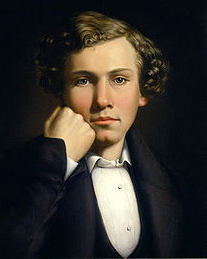윌리엄 타일리 라니(William Tylee Ranney)FOLLOW
1813년05월09일 미국 코네티컷 주 미들타운 출생 - 1857년11월18일

추가정보
American painter. He spent six formative years in the hill country of North Carolina. By 1834 he was working and studying drawing in New York, but two years later he went to Texas to join in the war for independence. Although he returned to New York a year later, it was not until 1846, with the outbreak of the Mexican War, that Ranney began to use his Western experience as the basis for his painting. With the encouragement of the American Art Union, he executed three types of Western subject: the Western trapper or hunter, pursuing a dangerous life on the prairies, as in Trapper’s Last Shot (1850; untraced; engraved and lithographed by T. Dwight Booth); the pioneer family, heading across the plains with children, dogs and goods, as in Advice on the Prairie (1853; Malvern, PA, Claude J. Ranney priv. col.); and the dangers of emigration, for example Prairie Fire (1848; Paoli, PA, J. Maxwell priv. col.). Painting on a fairly large scale, Ranney combined a particularizing, detailed technique in his trappers and pioneers, their costumes and their animals, with broad, freely brushed panoramic backgrounds. His work was praised as completely American, its authenticity vouched for by his West Hoboken studio filled with such Western paraphernalia as saddles, guns and sketches. Ranney also painted Eastern sporting scenes and several historical works about the American Revolution.
